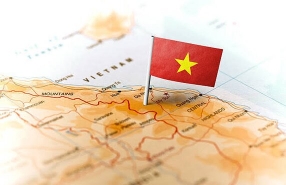What Is Lotus Tea Good For? Enjoy Vietnamese Lotus Tea, A Must-try For Lovers

Table of Contents
1. What is Vietnamese lotus tea?
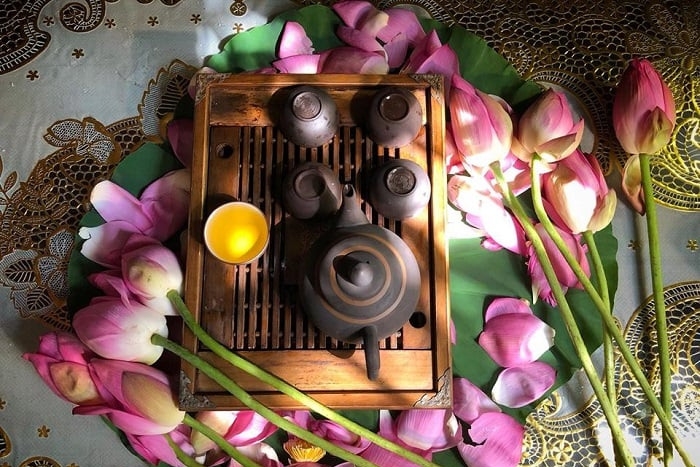
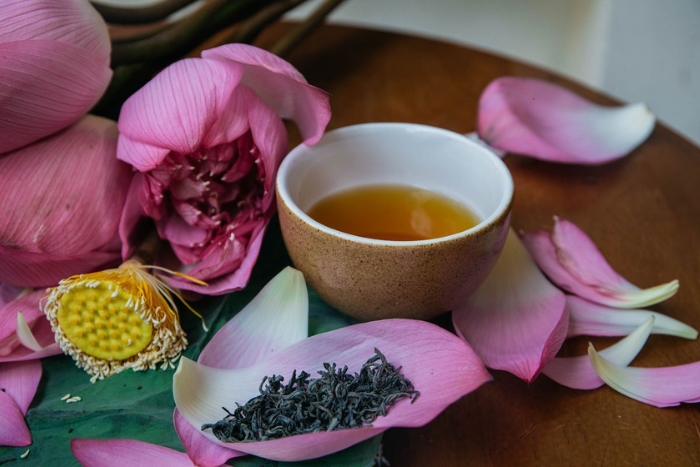
Lotus Tea (Trà Sen): Lotus tea is crafted by scenting high-quality green tea leaves with fresh lotus petals. This process infuses the tea with a delicate, sweet aroma, creating a soothing and refreshing drink often enjoyed on special occasions.
Lotus Leaf Tea (Trà Lá Sen): Lotus leaf tea is made from dried lotus leaves. It has a mild, slightly bitter taste and is consumed for its distinctive flavour and unique qualities.
Lotus Core Tea (Trà Tâm Sen): Lotus core tea uses dried lotus seeds. This Vietnamese lotus tea is valued for its calming effects, making it ideal for relaxation. It has a slightly bitter flavour and is often used for its unique and calming properties.
2. Vietnamese lotus tea benefits
Relaxation and stress relief: The soothing aroma and natural compounds in lotus tea help to calm the mind, the calming properties of lotus tea can relieve anxiety making it ideal for those struggling with insomnia or stress. Drinking 1-2 cups of this Vietnamese tea everyday reduces stress and promotes a sense of relaxation and well-being.
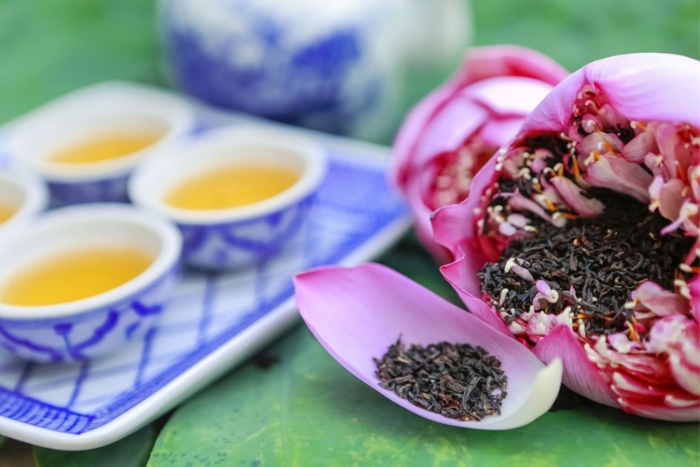
Antioxidant properties & slows down the aging process: Rich in antioxidants, lotus tea helps protect the body from harmful free radicals, supporting overall health and longevity. Antioxidants like vitamin C and EGCG offer anti-aging benefits and promote vibrant, healthy skin.
Improve memory: What is lotus tea good for? Vietnamese lotus tea has a modest caffeine content, ranging from 25 to 50 milligrams per 230 millilitres. This, combined with its L-theanine content, not only helps keep you alert but also enhances brain function, improves memory, and reduces fatigue, supporting cognitive health and mental clarity.
Digestive aid: Lotus tea improves gut health and soothes the digestive tract, reducing discomforts like bloating and indigestion. It serves as a gentle and effective remedy for maintaining digestive wellness.
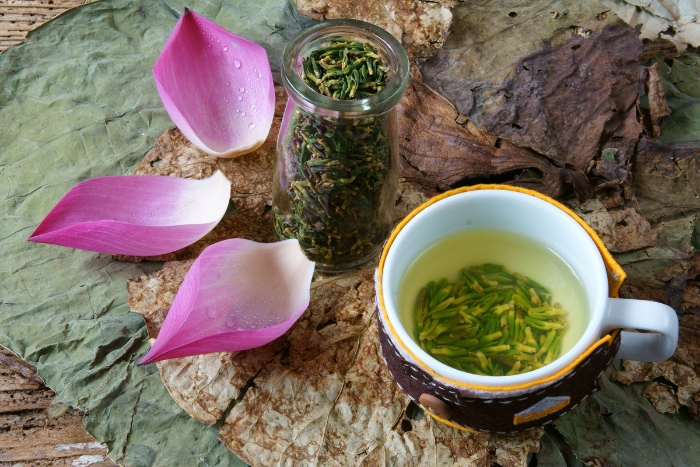
Enhanced sleep quality: Lotus tea vietnam is known for its natural sedative properties that help initiate and sustain deep, restorative sleep. By promoting relaxation and reducing stress, it facilitates healthier sleep cycles and improves overall sleep quality. Regular consumption can lead to more restful nights and increased daytime alertness.
3. How to make Vietnamese lotus tea?
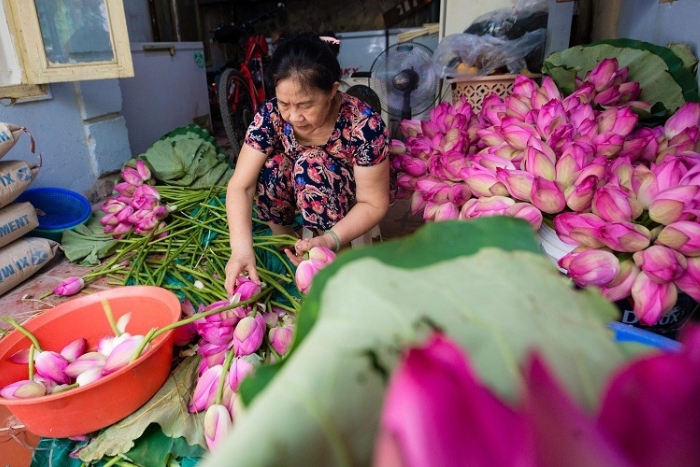
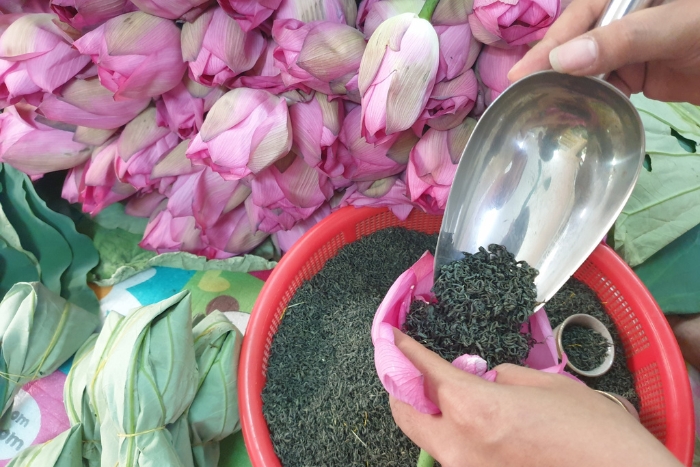
4. Some famous Vietnamese lotus tea brands
a. Tay Ho Lotus Tea
- Trà Ướp Sen Tây Hồ
Google map: https://maps.app.goo.gl/3Vg9jAFNkQnWoMKs7
- Trà Sen Tây Hồ - Minh Cuong Lotus Tea
Google map: https://maps.app.goo.gl/h3HUL88yDP5ichhJ8
b. Tan Cuong Xanh
- 203 Hang Bong street, Hoan Kiem district, Hanoi
- 20 Hang Duong street, Hoan Kiem district, Hanoi
- 125 Thuy Khue, Tay Ho district, Hanoi
You may find the following circuits helpful:
>>> Vietnam Trip 2 weeks
>>> Vietnam Vacation 18 days
>>> Vietnam Day Trips
>>> All our Vietnam Package Tours
Vietnamese iced tea, commonly known as “tra da,” is one of the most beloved drinks in Vietnam. This refreshing beverage is made by brewing Vietnamese green tea or black tea and serving it over ice.
The Vietnamese tea ceremony or Vietnamese wedding tea ceremony, or "Lễ ăn hỏi", is a traditional and significant part of Vietnamese weddings. It involves a procession from the groom’s family to the bride’s house with gifts, including tea. The couple offers tea to their ancestors at the family altar, seeking blessings. They also serve tea to their parents and elders, expressing gratitude and receiving advice and gifts. The ceremony symbolizes the union of two families and respect for ancestors. It is followed by the bride joining the groom’s family and a celebratory feast, marking the couple’s new life together.
Related travel guide
Other similar articles
CUSTOMIZABLE BY LOCAL EXPERTS
Personalized trip at the original price!
REFUND GUARANTEE
We believe in our work and promise to give you money back.
GOOD PRICE / QUALITY
95% satisfied more than expected!
24/7 LOCAL SUPPORT
We are always available online to provide assistance at any time.
Most read articles
Autour Asia is highly recommended on
Embracing the mission of "Satisfied more than expected" and providing authentic experiences, we have received numerous recommendations on reputable travel forums:
















